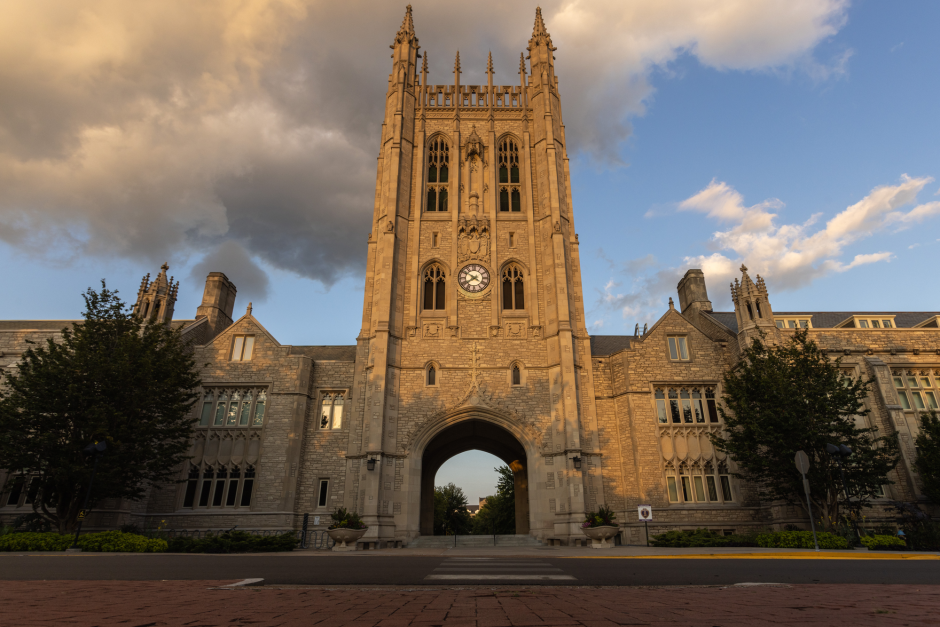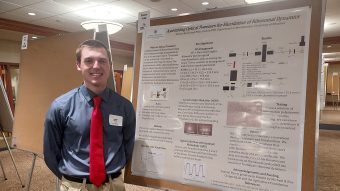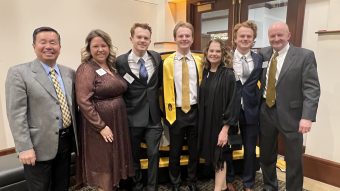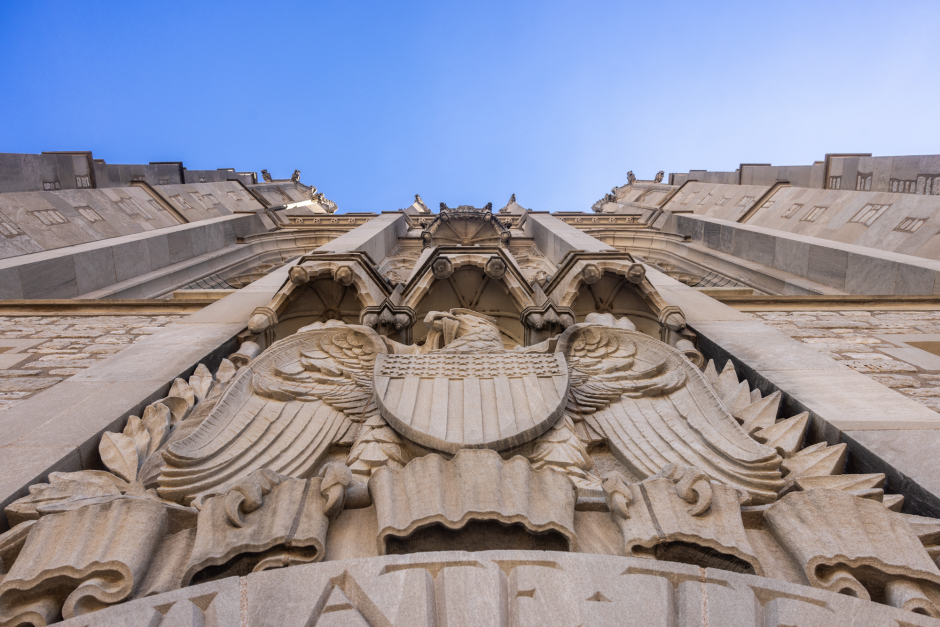
May 22, 2025
Contact: Janese Heavin, heavinj@missouri.edu
Photos by Nicholas Andrusisian and Mizzou Visual Productions
With its soaring arches, tolling chimes and solemn inscriptions, Memorial Union at the University of Missouri is more than a campus landmark. It is a sacred space — a physical and symbolic tribute to generations of Mizzou students who gave their lives in service to the United States.
As Americans across the country pause to honor the fallen this Memorial Day, Memorial Union stands as a constant reminder that remembrance lives not just in a single holiday, but in the architecture, symbols and traditions of everyday life.
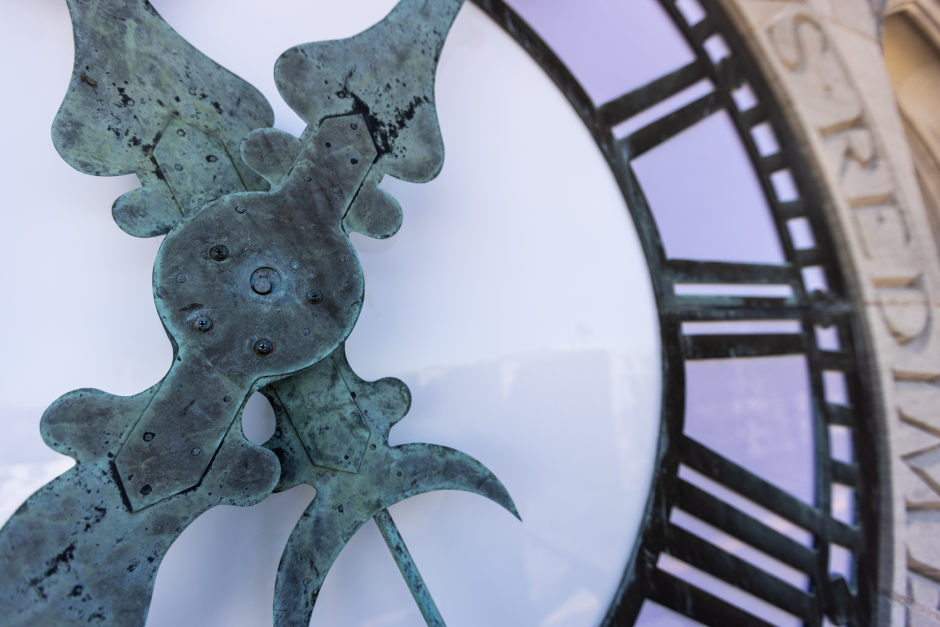
Built for memory
The idea for a student union at Mizzou first emerged during the 1915–16 school year. But following the end of World War I, students, faculty and alumni reimagined the project. The new vision was not just a place for gathering but a permanent memorial to those lost in war.
Construction of the central tower began in 1923. Progress stalled, however, during the Great Depression and World War II. It wasn’t until the 1960s that the north and south wings were completed — nearly four decades after the cornerstone was laid.
In its final form, Memorial Union became both functional and sacred, a place where community, scholarship and sacrifice coexist.
Perhaps the most powerful feature of the building lies in its limestone walls, where the names of the fallen are etched in quiet dignity: 117 Mizzou students honored for their service in World War I and another 340 names of those lost in World War II. Nearly 2,500 additional names commemorate those who died in the Spanish-American War, Korea, Vietnam, Desert Storm, Operation Iraqi Freedom and the war in Afghanistan.
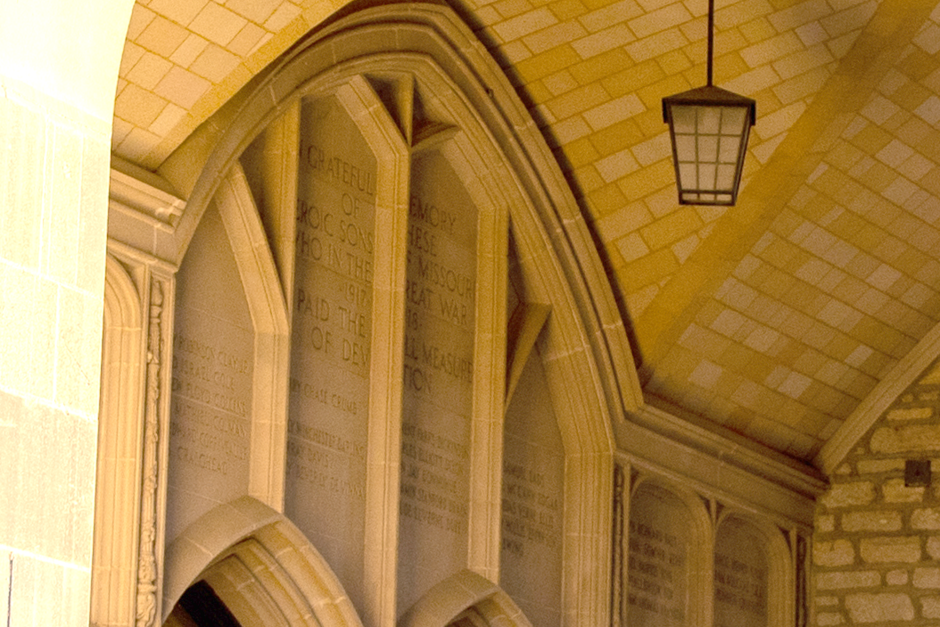
Architecture with meaning
Designed by St. Louis architect James P. Jamieson, the Union’s Gothic Revival design is rich with symbolism. The 143-foot tower — inspired by the Great Tower of Magdalen College at Oxford — evokes the solemn grandeur of medieval architecture, grounding the structure in centuries-old tradition.
The clock on the tower, modeled after London’s Big Ben, is inscribed with the Latin phrase in sapientia ambulate tempus redimentes — “walk in wisdom, redeeming the time.” Just below it, an owl spreads its wings wide. A symbol of wisdom since antiquity, the owl holds a bone in its claws — a reference to memento mori, the timeless reminder of mortality.
Three styles of arches span the tower’s facade, each one drawn from different periods and places in Gothic history. Above them, four sculpted eagles hold icons of remembrance: the year 1918, when World War I ended; the six Ionic columns of Mizzou’s Academic Hall; a lily, symbolizing purity and renewal; and the U.S. Coat of Arms, its gaze turned toward peace.
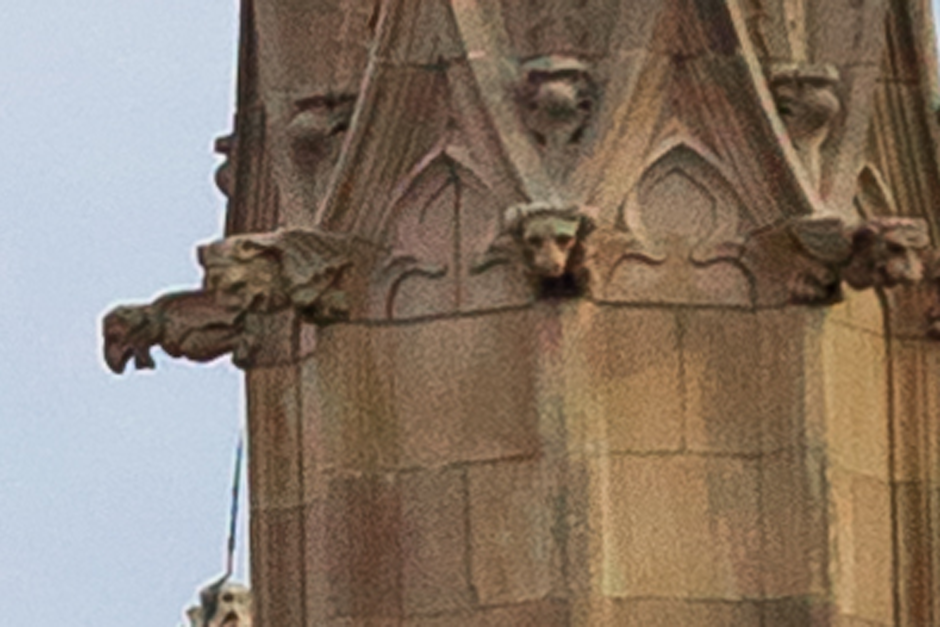
Thirty-two gargoyles peer from the tower’s spires, each one different, each one watchful. Unlike traditional gargoyles, which functioned as waterspouts, these serve only as decoration — expressive figures silently observing the passage of time.
At the four corners of the tower, statues of World War I soldiers and sailors kneel in solemn stillness. Stripped of rank and name, they represent the archetype of service — not individuals, but every individual.
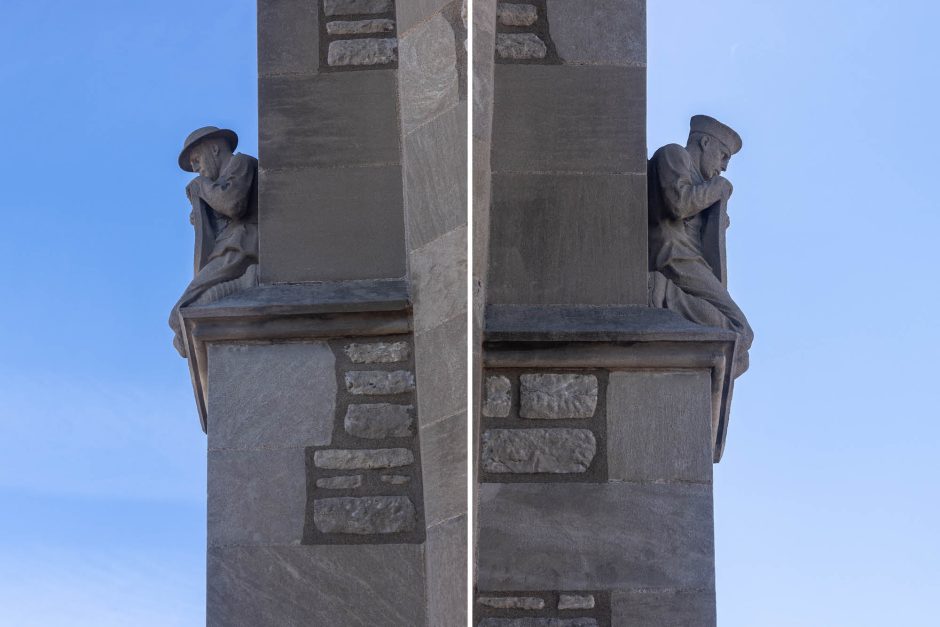
Two seals further connect the structure to its roots. The Great Seal of Missouri, with its bears, crescent moon and shield, evokes the shared spirit of the state. The university’s own seal, designed in 1903, reflects that heritage while bearing the motto salus populi — “the welfare of the people.”
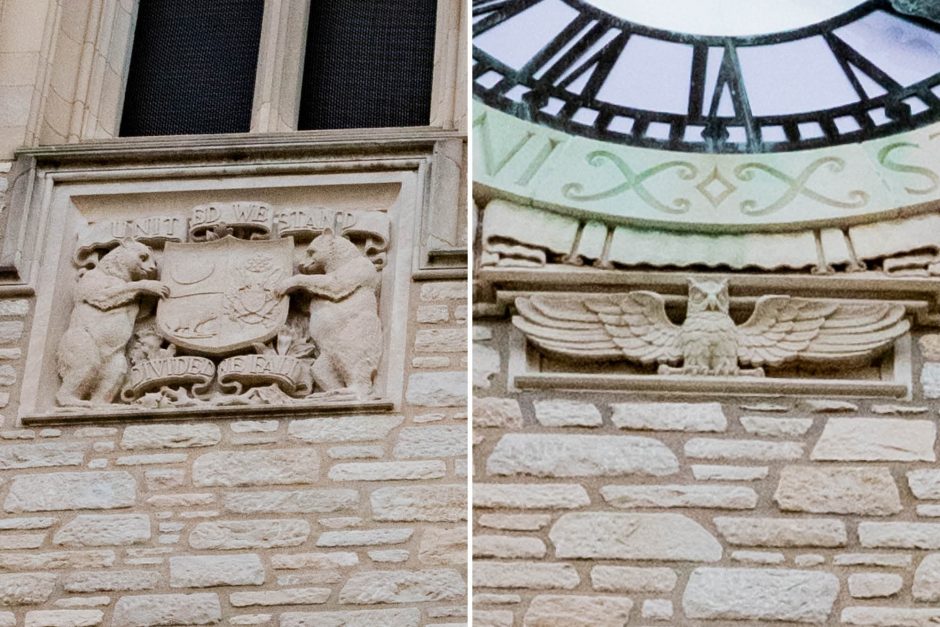
A living memorial
Over the years, Memorial Union has become deeply woven into campus culture. A quiet tradition endures: When walking beneath the tower’s arches, passersby are asked to speak softly and to remove hats in honor of the fallen. No one mandates it. No one watches. But the gesture remains.
Today, the Union is a vibrant part of student life, home to offices, meeting rooms and daily activity. And yet, beneath that liveliness, the building holds a deeper stillness — a place for remembrance, reflection and reverence.
